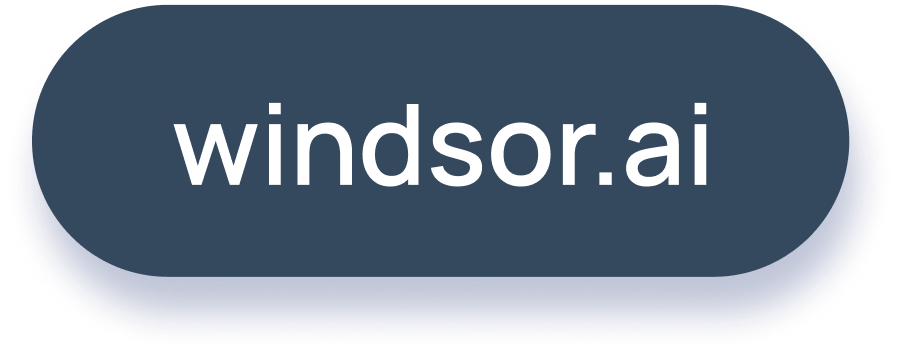Marketing Personalization at Scale: Using Data to Improve Customer Experience

Personalization in marketing matters more than you might assume. When it was first introduced, it was a niche that only a few companies utilized. Now, it has become a necessity. If you do not personalize your marketing efforts, you are losing out on much business.
But what is personalization? It refers to creating and presenting marketing content in a way that your audience prefers. Personalization at scale refers to doing all of that across every single marketing channel throughout the customer lifecycle for every customer.
As you may have surmised, this massive undertaking seems borderline impossible, especially for companies with millions of customers worldwide.
However, today, this is not only possible but easy to implement with the help of AI, data, and automation. Data is the most important thing here, as it helps you better understand your customers and what they want to see.
The role of data in marketing personalization at scale
To personalize your marketing efforts, you need to know the following essential things about your customers:
- Their likes and dislikes
- Their spending habits
- Their browsing habits
- Their spending capability
- The region where they live/operate in
- Their age and gender
This type of data can help you create a profile for each customer, providing valuable insights into their psychology so you can approach them most effectively.
However, you should not, and in most countries, you’re not allowed to collect this kind of data without permission. You need to get consent from the customers to collect their data and personalize your marketing for them.
“The intersection of data privacy and personalization represents one of today’s biggest marketing challenges,” says Alex Lekander, Editor-in-Chief at Cyber Insider. “As companies scale their personalization efforts, they must implement robust data security measures to protect the very information that powers these initiatives.”
Once you obtain consent and the data, you can start using it for large-scale personalization. Let’s see how.
How to acquire and use data for marketing personalization
1. Use data integration tools
Data integration tools are specialized SaaS software that allows you to cover the following tasks:
- Aggregate data from various sources (including blending data)
- Export that data to spreadsheets or databases for in-depth analysis
Windsor.ai is one of the best data integration and marketing reporting tools that lets you connect data from 325+ sources, including social media accounts, marketing platforms, business apps, and any analytics software/website. Then, you can easily send your unified data to any data destination, such as Looker Studio, Power BI, BigQuery, and many others.
You can start using Windsor.ai as an individual or a small business and then scale it up along with your operations up to the enterprise level.
Once you have a unified view of the data, your analysts can use it for:
- Finding trends in customer behavior and spending habits.
- Identifying better ways to deliver content.
- Making informed decisions to improve profits and customer satisfaction.
One of the best parts of Windsor.ai is that it provides daily/hourly data updates. This prevents you from working with outdated data and making the wrong moves.
2. Personalize email outreach
Once you have insights from the reporting tool, it’s time to personalize your marketing efforts. Email marketing is a prime candidate for this, and there are several reasons for using this channel:
- Emails are a one-to-one communication.
- Emails have the potential to be hyper-personalized.
- It is not dependent on search engines and ranking.
- You can directly reach your customer by email.
By 2025, the number of email users is expected to hit 4.6 billion globally. This highlights just how effective and far-reaching email still is, making personalization key to standing out and driving engagement.
One of the most effective tools for achieving this is an email marketing platform, which enables personalized communication at scale based on user behavior and preferences. You can use powerful mailing tools like HubSpot or MailChimp to create and send emails conveniently. They have robust analytics reporting features that you can easily integrate with Windsor.ai for maximum impact.
For example, you have already collected all the customer names and profiles. Then, you can create and schedule emails to send to each customer. Email marketing software typically has some automation features, and you can use those to develop entire customer journeys in advance and then leave the rest to the tools. To ensure your emails reach inboxes and aren’t flagged as spam, it’s also important to configure your domain settings properly — tools like an SPF generator can help you create Sender Policy Framework records to improve email deliverability and authentication.
Ensure that your email content is personalized, i.e., it addresses the specific customer’s concerns and complaints.
3. Personalize social media posts
Social media is one of the largest and most successful platforms for digital marketing. Modern social media networks have algorithms that aim to generate the most engagement from their audience. That’s why you often see “Recommended for You” sections on platforms like Facebook, Instagram, X, Reddit, and Snapchat.
You can use this feature to your advantage by using data. With your collected data, you need to infer what kind of audience you have and what content they respond to.
Different demographics will have different preferences, but you should already know that, thanks to the aggregated data from the reporting tool. So, you should create various posts and videos using AI video dubbing to make content more accessible and appeal to a wider audience. The algorithm will boost your content as long as you produce it consistently.
Maintain a healthy mix of educational and promotional content to get the most out of it. If you sell custom products, such as t-shirts, mugs, or stickers, consider tailoring social media posts with designs that resonate with specific audience segments. This print-on-demand personalization can significantly boost engagement and drive sales.
Also, remember that personalization isn’t just about external marketing — it can enhance internal communications. For example, using data to understand what motivates your team members allows companies to craft more meaningful recognition strategies, such as sending employee appreciation cards tailored to individual achievements and milestones.
4. Create dynamic website content
Dynamic websites are modern websites whose presentation and content can change according to the person who visits them. Thus, no two people will have the same experience on a dynamic website; each will see a different result.
The website’s look depends on the region from which each person visits the site, their previous actions, and other factors.
For example, you can use tools like an IP location checker to find the user’s region and show them localized content. Marketers and developers often use a Chrome proxy extension to simulate traffic from different regions, allowing them to test how location-specific content is displayed around the world.
Similarly, by checking their purchase history (on your site), you can recommend content or products that appeal to them.
Another example is where you show them recommendations based on things they liked, wishlisted, or ignored.
Note that you will have to manually create dynamic content for each type of customer; otherwise, it won’t be engaging and can even generate a mess.
5. Utilize AI and automation tools
Artificial intelligence and automation are the most significant developments in the tech world. AI is gaining traction for automation, and industry leaders are exploring ways to automate tasks that require human expertise.
Many of the tools discussed in this article, such as Windsor.ai, HubSpot, and Mailchimp, use embedded AI and automation.
Aside from that, much of the usual correspondence with customers can be automated, such as:
- Email reminders for abandoned carts
- Updates on wishlist items and sales
- Updates on payments
- And many other things that happen routinely. Consider enabling an AI answering service to handle routine customer calls, freeing up your team for high-value tasks.
You can use automation for things like this and leave the manpower for the important stuff. Even tools like a password manager contribute to streamlined and secure data access for marketing teams, especially when handling multiple client accounts and credentials across platforms. For a dependable option, Cybernews offers a detailed 1Password review – an excellent password manager that blends security with team-friendly features.
Conclusion
Personalization at scale is essential for businesses seeking to improve customer experience and engagement. By leveraging data, AI, and automation, companies can efficiently deliver relevant content and interactions.
Powerful reporting tools simplify data integration, making personalization more effective and scalable. Businesses that embrace these strategies will stay ahead in an increasingly competitive landscape.


